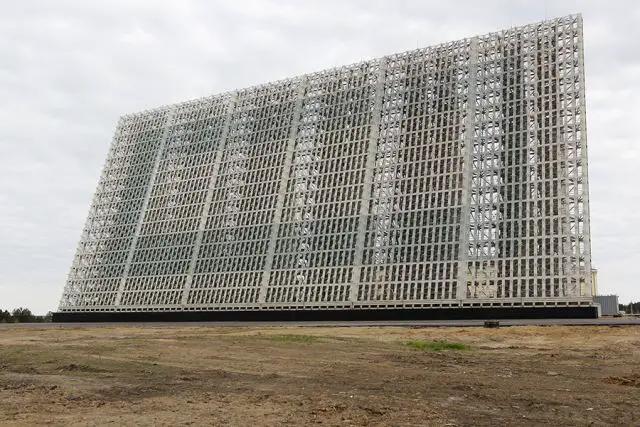|
|
|||
|
Defense & Security News - Russia
|
|||
|
|
|||
|
The new-generation Voronezh-DM radar set up near Yeniseysk in the Krasnoyarsk Territory in East Siberia will be put into operation before the yearend, Russian Space Force Commander Lieutenant-General Alexander Golovko said.
|
|||
|
|
|||
 (Source: Russian MoD)
|
|||
|
|
|||
|
"There are plans to complete the operational evaluation of the radar and put it into operation before the yearend," Golovko told Russian Defense Minister General of the Army Sergei Shoigu, who had checked the on-duty crews operating the high-prefabrication Voronezh-DM radar.
The Voronezh-DM radar able to detect ballistic and hypersonic targets at a range of 6,000 kilometers (3,728 miles) started undergoing operational evaluation in late 2016. Since that time, the radar has been operated by Russian Space Force on-duty teams in cooperation with representatives of defense enterprises. When the operational evaluation is completed, the radar will be put into operation with Russia’s Aerospace Force. During the operational evaluation, the servicemen have registered six launches of intercontinental ballistic missiles. The radar covers the northeastern part of the Pacific Ocean and the Northern Strategic Area. The Voronezh-DM radar deployed in the Krasnoyarsk Territory makes part of Russia’s missile early warning system. The radar provides data on missile launches and increases the effectiveness of the Russian Armed Forces’ response actions. According to the Defense Ministry, a network of high-prefabrication radars, which is currently being established, aims to enhance the capabilities of the Russian missile early warning system. The new-generation radar features increased technical and tactical characteristics. The network of advanced hi-tech radars will enhance the potential of the Russian missile early warning system as quickly as possible and establish a continuous missile early warning coverage over Russia. The missile early warning system receives data on missile launches and trajectories and transmits it to public administration and military governance bodies. It also deals with information necessary for Moscow’s ballistic missile defense system and transmits data on space objects required by the space surveillance system. |
|||
|
|
|||
|
© Copyright 2017 TASS. All rights reserved. This material may not be published, broadcast, rewritten or redistributed.
|
|||
Russian radar Voronezh-DM in service end of 2017 80706173
- Posted On














